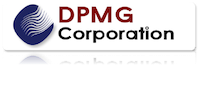
Five Critical Success Factors for Any Organization
May 1, 2023
From Colleagues to Family: The Power of a Family-Oriented Workplace
August 1, 2023Looking back over the past decade, I’ve witnessed a remarkable evolution in how business meetings are conducted. Around 10 to 15 years ago, I vividly recall assisting clients in developing strategic plans in expansive conference rooms. These spaces were adorned with scattered papers; Post-it notes clinging to the walls, and an array of office supplies sprawled across the table.
As the day progressed, the remnants of our caffeine-fueled discussions would accumulate, leaving behind a chaotic scene of empty coffee cups, soda cans, and sandwich wrappers amidst the stationery. Our duty was to gather the scattered notepads and yellow stickies, preparing summaries for the next day’s sessions.

However, since the COVID-19 pandemic swept across the globe, the landscape of meetings has undergone a radical transformation. Zoom calls have become the new norm, replacing physical gatherings. Traditional tools have given way to electronic counterparts, as paper and Post-it notes have become relics of the past.
While millennials and Gen Y/Z workers have embraced the shift towards remote work and electronic whiteboards like Miro, some older executives find adapting challenging. Zoom calls are met with resistance, particularly among those in the 50-65 age range. Nevertheless, the younger generation sees the benefits of modern electronic tools and recognizes their potential to enhance productivity and streamline workflows.
As the business world evolves, bridging the generation gap by embracing these advancements will be essential for maintaining competitiveness and efficiency.
In fact, at first, many clients were skeptical about online meetings, especially those who were used to face-to-face interactions. But as time passed, they appreciated virtual meetings’ convenience and efficiency. They no longer had to travel long distances to attend meetings and could save time and money by participating in their offices.
And the Gen Z and Gen Y mid-level executives love it and see that as the future.
Moreover, electronic tools like Miro have revolutionized how we plan and strategize. With Miro, users can collaborate and share ideas in real time, creating an interactive and dynamic experience. Instead of writing on a whiteboard or post-it notes, they can now create digital whiteboards and work together to develop plans, assign tasks, and set milestones.
Another trend that has emerged is remote work. More and more companies are embracing this concept, and electronic tools are making it easier than ever to work from anywhere in the world. With cloud-based platforms like Google Drive, employees can collaborate on documents and projects from anywhere, using any device.

However, with these changes come challenges. As a consultant, companies struggle to adapt to the new virtual environment. They must ensure employees have the right technology and training to work effectively in this new world. They must also develop new policies and procedures to keep their teams connected and productive.
The future is now for businesses, and change is constant. As a consultant, it’s my job to help companies navigate these changes and stay ahead of the competition. By embracing electronic tools and remote work, they can create a more efficient and effective workplace that meets the needs of their employees and customers.

Jesus (Jes) Vargas is the Principal at DPMG Corp in Sacramento, CA. Jes and his team consult, coach, and mentor business leaders in strategic planning, leadership development, and project management.
They’re ready to help clients plan a new product or fine-tune an existing marketing strategy.
Or help your company bridge any generation gaps among executives.
If you are concerned about the culture in your company, Jes can help you create a new one or improve the one you have. Call Jes at 916 712 6145. Or you can email him here.




